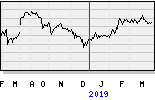
Years of research and demonstrations have broadened our expertise and technological know-how in the production of polylactic acid (PLA), allowing us today to consider different industrial options. Our strength lies in our R&D investments combined with years of experience in producing and processing polymers and in developing applications.
PLA: Concentrated biotechnology!
Produced from the fermentation of sugar (e.g. sucrose from beetroot in Europe, sugarcane in South America or glucose from the US maize starch), PLA is a plastic material that is bio-sourced and industrially compostable with a low carbon footprint.
PLA’s properties include transparency, rigidity and the ability to act as a barrier for odors and grease. These attributes offer immense commercial potential. PLA has already been used in the medical industry for years to make suture thread and orthopedic rods. Now, it is also meeting needs in such growing markets as food packaging. PLA is gradually becoming a preferred material for more demanding applications in the textile, electronics and automobile industries, as well as for new applications like hydraulic fracturing.
Marketing PLA would enable us to expand Total’s offer, meet existing market demand, and enter new, high-growth markets, such as:
Compostable food packaging
Compostable bags for single use and organic wastes
Agriculture films
Fabrics and textiles
3D printing
Electronics
Oil & Gas additives
The virtuous circle of PLA production
Lactic acid obtained from the fermentation of sugar (from sugar beets or sugar cane) or starch (from wheat or corn) is the raw material used in the production of polylactic acid (PLA).
Polylactic acid production comprises four main steps:
Extracting sugar derived from sugar cane or beets, or starch extracted from other plants (corn, wheat…)
Converting sugar (sucrose, glucose) into lactic acid by fermentation
Preparing and purifying the monomer (lactide) from the lactic acid.
Polymerizing the monomer to create renewable biodegradable plastic pellets (PLA).
At its end-of-life, PLA can either be industrially composted and converted back into a renewable raw material, or depolymerized to obtain the original monomer (lactic acid). The monomer can then be used to make more PLA.
